ASRock Core 100HT-BD : Bringing HTPCs to the Mainstream Market [UPDATED : Noise Issue]
by Ganesh T S on July 19, 2010 9:34 PM EST- Posted in
- Home Theater
- Arrandale
- ASRock
- Media Streamer
- Core i3
- HTPC
One of the most interesting aspects of the Arrandale platform is the fact that the GPU is integrated in the same package as the CPU. The GPU die also contains the PCIe and DDR3 memory controller. While the main CPU is fabricated in the 32nm process, the GPU die is fabricated in the 45nm process. Placing the GPU and CPU in the same package saves on power and also board costs. The graphics part of the GPU die in the package is an evolutionary version of the Intel G45 IGP. A comparison of the Intel HD Graphics in the Arrandales and the earlier G45 is provided below.

An interesting thing to note here is the availability of dynamic frequency scaling for the Arrandale GPU, which actually lowers the power consumption of the system. A 900 MHz GPU part on a typical Clarkdale system would up the TDP by 15W or more compared to the lowest end Clarkdale with a 733 MHz GPU. On the Core 100 HT-BD, however, overclocking doesn't require any special thermal arrangements. The higher frequencies kick in only when the load on the GPU becomes high.
We had earmarked the Clarkdales as the perfect HTPC platforms earlier this year. This Arrandale offering may actually tempt us to revise our opinions, given the form factor and the power profile. We will cover this in detail in the later sections. In the rest of this section, we will cover the features of the Intel HD Graphics engine, as it relates to HTPC users. Before going into the details, let us take a look at what Intel has improved in terms of video decode and processing in this iteration of their IGP.
DXVA Compatibility
Intel's support for DXVA came in for a lot of criticism during the G45 days. The paranoia inside the company made it impossible for open source enthusiasts to get hold of the special DXVA interface used by Intel. It used to be made available under NDA to various ISVs (Independent Software Vendors) such as Cyberlink, ArcSoft etc. Thankfully, things have been slowly changing for the better. Currently, most applications (except for VLC) are able to take advantage of the DXVA acceleration provided by the HD Graphics engine. The screenshot below gives us a quick idea of the DXVA capabilities of the Core i3-330M in the Core 100 HT-BD. It is interesting to observe that there is no VLD mode for VC-1, but we did observe 1080p VC-1 Blu-Rays play with less than 5% CPU usage on ArcSoft TMT. This just indicates that the interface to full acceleration mode for VC-1 is available only under NDA as of now.
HD Audio Bitstreaming
Right from its debut, the Arrandales have been able to bitstream HD audio from Blu-Ray discs played back through Cyberlink's PowerDVD or ArcSoft TMT. The Core 100 HT-BD is no different. We were able to play back all Blu-Rays with bitstreaming to the AV receiver, as the following screenshots show. In addition, hardware acceleration with Intel HD Graphics shows its class, with low CPU utilization being observed during playback. Despite the red spikes observed in the DPC Latency Checker program, we didn't notice any audio dropouts or stutters in the video.
Using the open source ffdshow Audio Decoder, HD audio can also be bitstreamed out of standalone MKVs and M2TS files. (More on this in the next section)
With the above features, Intel HD Graphics seems to be a winner, and the Core 100 HT-BD could potentially be the utopian HTPC that enthusiasts have been searching for. Is that really the case?
Driver Support - Intel Misses the Boat!
Since the release of the G45, videophiles have been clamouring for the support of 23.976 fps display refresh rate. Intel caved in and released a driver where you could choose 23 Hz in the graphics control panel. Unfortunately, this only results in a refresh rate of 24 fps. While watching videos encoded at 23.976 fps, this results in a small stutter every 40 seconds or so. Most people get past this by setting the refresh rate of their display to 60 Hz. However, dedicated enthusiasts still see this as a major shortcoming of the platform.
Another issue which has remained since the G45 days is the efforts taken to open up the DXVA specifications of the GPU for open source developers. Lot of progress has been made over the years, but full VC-1 decode acceleration remains elusive in applications like MPC-HC or VLC. As we discussed in the DXVA Compatibility subsection, the VC1_VLD mode which is commonly utilized by open source video decoders is absent. However, Intel's marketing team does indicate complete VC-1 decode acceleration. We can only surmise that this is made available for the Microsoft and other ISV decoders to make use of.
The drivers supposedly support advanced deinterlacing, but users do not have as much control over the algorithms used as they have when using ATI HTPC cards such as the Radeon 5xxx series. Noise reduction algorithms are also not transparent to the users. The frequency of driver updates is rather low, and issues continue to remain unaddressed.
If the end user can put up with these iGPU limitations (personally, I can), the Core 100 HT-BD is indeed a very good choice. This will be further elaborated in the next few sections.


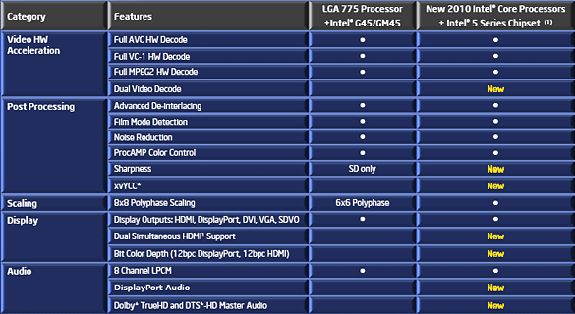
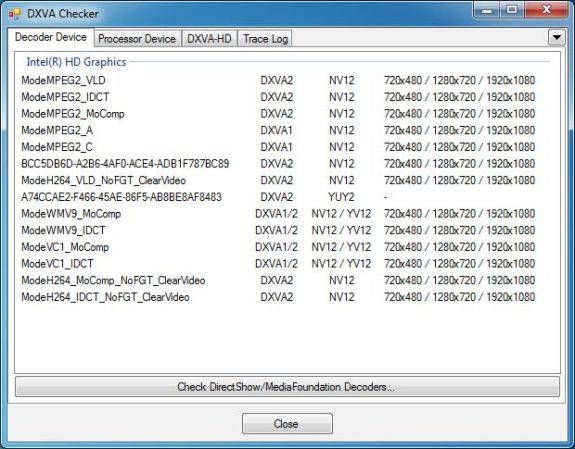
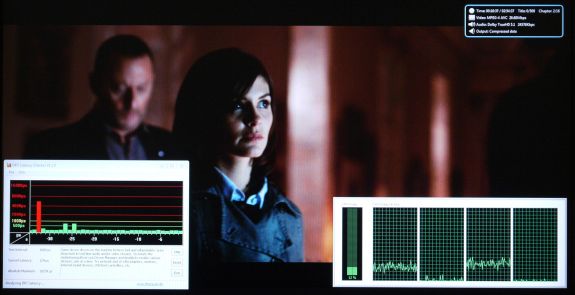
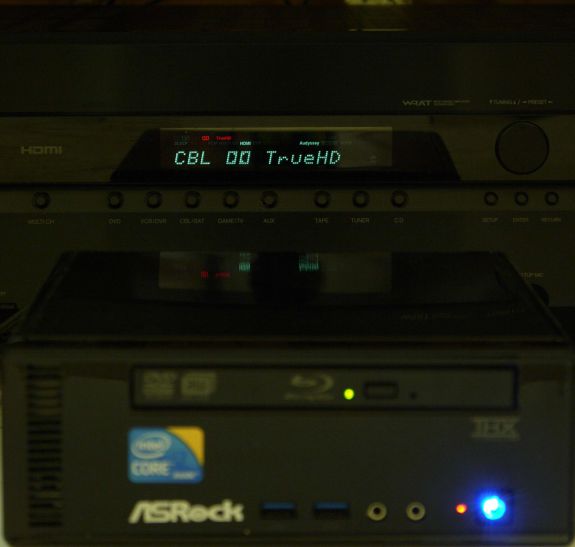
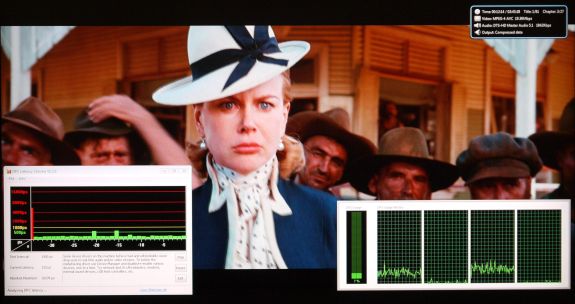
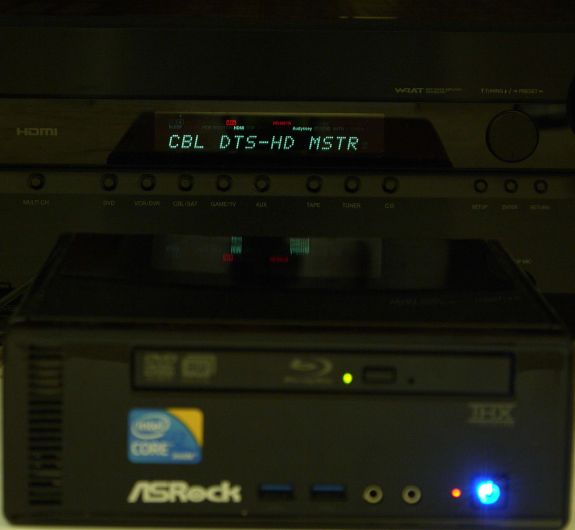








107 Comments
View All Comments
GreeneEyez - Tuesday, July 20, 2010 - link
Have fun bitstreaming HD audio from the Mac Mini or playing back Blu ray disks/ISOs...ganeshts - Tuesday, July 20, 2010 - link
GeorgeH,It is not possible for any home built mini-ITX box to be within the power envelop of this unit.
This uses an Arrandale processor which isn't available for purchase by the general public.
Further, as you rightly observe, the MacMini has worse specs, but looks better. Companies like ASRock provide the best bang for the buck, and in this pursuit, industrial design takes a back seat. However, things are going in the right direction, and I am sure the execution next time around will be much better from all perspectives.
softdrinkviking - Tuesday, July 20, 2010 - link
i need a tv tuner in or connected to my htpc.you say that the 100HT-BD's chipset cannot support an internal TV tuner, but that it has a smaller power envelope than a chipset which can.
in that case, you would also have to factor in the extra power used by your external TV tuner box.
you would also have to compare the cost of that box versus the cost of a tuner card.
if all things are equal (you break even), then the all-in-one solution (a beefier htpc) would be the obvious choice.
tmservo - Tuesday, July 20, 2010 - link
As others mention, since the MacMini doesn't do Bluray, and doesn't bitstream DTS-MA or DD-HD, it's not really a great HTPC. It's LPCM support also troubled, and it doesn't matter since it doesn't do Bluray. The MacMini simply isn't a very good HTPC at all. It might compete against something like an ION.. except you can get an ION with BD at 1/2 the price. Apple has to give up rejecting the "bag of hurt" that is bluray, because as long as they keep their phobia of it, they aren't in the HTPC market at allComputer Bottleneck - Tuesday, July 20, 2010 - link
It will be interesting to see your future evaluation of the AMD IGP in the HQV 2.0 benchmark.As far as this product goes I really liked reading your technical explanation of how Asrock integrated what is basically a laptop mainboard into the Mini-ITX form factor.
alaricljs - Tuesday, July 20, 2010 - link
Can I suggest in that HTPC centric features chart that under SPDIF you specify optical/copper instead of just yes/no?ganeshts - Tuesday, July 20, 2010 - link
Thanks for your suggestion, alaricjls.The SPDIF is optical, and I will update the article shortly.
dbone1026 - Tuesday, July 20, 2010 - link
Hey Ganesh,Excellent job with the review. Honestly I am surprised by some of the comments regarding an expansion slot, which to me defeats the whole purpose of ASRock making this HTPC in such a small form factor. Aside from USB tuners I know many people who use network tuners (i.e HDHomeRun) so in many cases there is no need for any sort of internal tuner. If want to strap on multiple tuners then why not just a MicroATX or ATX case as that is not the intention of this ASRock..
I honestly think the biggest challenge with the ASRock 100HT is the price. Newegg has it listed at $649 (without BR drive) and no O/S. The mini-ITX HTPC I built which was only slightly larger and was easily $100 less with better specs (using core i5). Hopefully we start seeing prices drop soon.
jabber - Tuesday, July 20, 2010 - link
I've been rolling out the dual core Atom ones for small office/home PCs. The customers love them over the old big black/grey boxes.Low power and small desk presence are a big win.
Very nicely made too.
Built about sixteen of them and not one issue so far.
erictorch - Tuesday, July 20, 2010 - link
The core i3-330m processor is available for ordering from www.superbiiz.comIf the reviewer reads this comment, can they comment on whether AHCI support is available in the BIOS menus? This is necessary to get the full performance out of a SSD. A lot of laptop bioses don't have AHCI selectable.